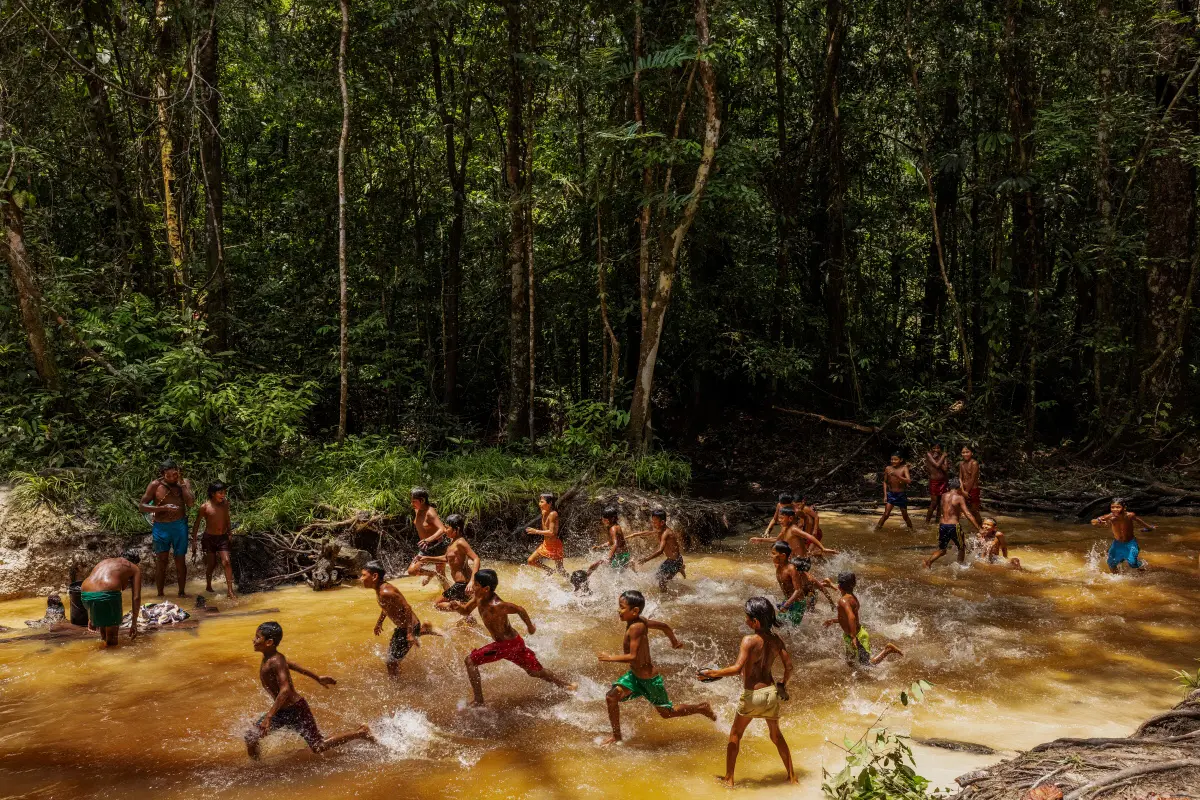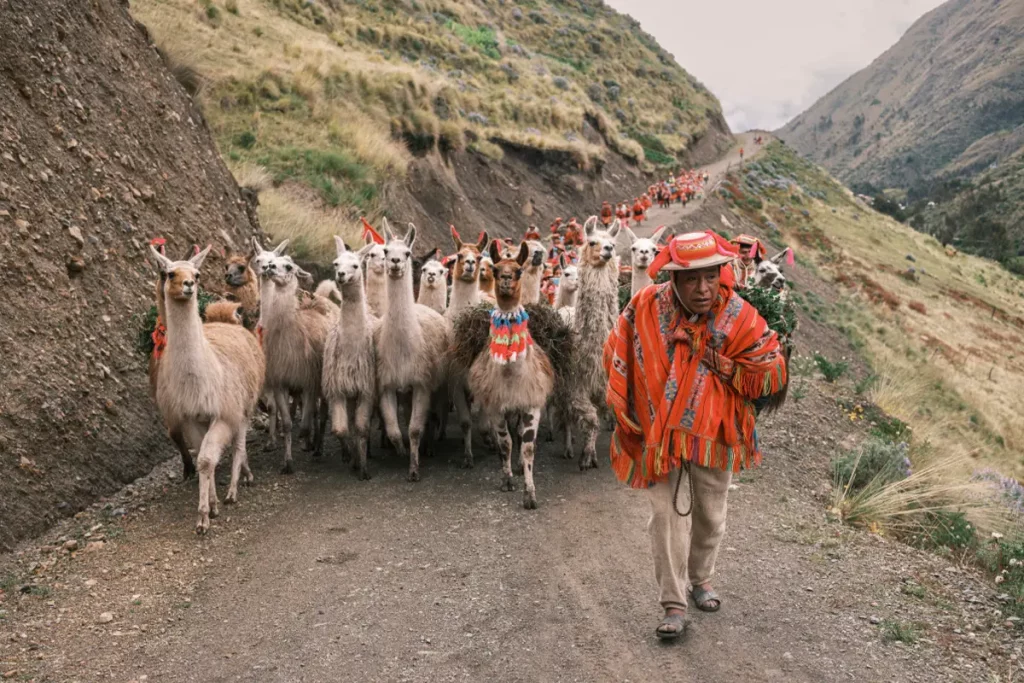The date of August 9 marks the first meeting, in 1982, of the UN Working Group on Indigenous Populations – 476 million people around the world and spread across more than 90 countries
State of the World’s Indigenous Peoples: An overview
They belong to more than 5 000 different distinct communities and speak more than 4 000 languages, representing about five-percent of the world’s population. The vast majority of them, around seventy-percent, live in Asia.
Indigenous Peoples suffer from higher rates of landlessness, malnutrition, and internal displacement than other groups, and discrimination is the reason why they make up fifteen-percent of the world’s extreme poor.
They are the last to receive public investments in essential services and infrastructure, and they face numerous obstacles in fully participating in the formal economy, accessing justice, and engaging in political processes and decision-making. This historical pattern of inequality and exclusion has rendered Indigenous Peoples more vulnerable to the impacts of climate change, natural disasters, and disease outbreaks like COVID-19.
Climate change exacerbates marginalisation and unemployment of Indigenous communities
Given their close relationship with the environment and the resources it has to offer, Indigenous people are the first to experience the detrimental effects of climate change.
For example, in the high-altitude regions of the Himalayas, the melting of glaciers is affecting the livelihoods of millions of rural inhabitants who rely on seasonal water flow, leading to an immediate increase in water availability, but in the long run, it results in less water.
The Amazon region is experiencing deforestation, fragmentation of forests, and the subsequent release of more carbon into the atmosphere, leading to the spread of fires which is impacting the lives of the people in the area who are forced to move since the savannahs are replacing the rainforests.
In the Arctic region, they depend on activities such as hunting, herding reindeer, fishing, and gathering. These activities provide not only food for the local economy but also form the foundation of their cultural and social identity. The reduction in weather predictability and safety concerns related to travel in changing ice and weather conditions are challenges that are posing significant threats to human health and food security.
United Nations’ OHCHR on Indigenous Peoples: Intangible Cultural and Living Heritage
A portion of the land occupied by Indigenous Peoples is under customary ownership. Many governments only recognize a fraction of this land as belonging to Indigenous Peoples according to formal or legal standards.
To address the multidimensional aspects of poverty and contribute to sustainable development and the Sustainable Development Goals (SDGs), it is crucial to enhance the security of land tenure, strengthen governance, promote public investments in quality and culturally appropriate services, and support Indigenous systems for resilience and livelihoods.
Also, the World Bank collaborates with Indigenous Peoples and governments to ensure that broader development initiatives incorporate their voices and aspirations.
Indigenous People’s Demands for UNFCCC CoP28, United Arab Emirates, November 2023
The twenty-eighth edition of the Conference of the Parties will be hosted by the United Arab Emirates at Expo City Dubai. The decisions that will be taken will shape the global approach to conservation and sustainable use of wildlife over the next few years. One of the issues that has been both recognized and promoted is the involvement of Indigenous People and Local Communities in the conservation of our endangered wildlife.
2023: Expo City Dubai
Expo City Dubai will serve as the host for the twenty-eighth gathering of the Conference of the Parties. The outcomes of this conference will significantly impact the worldwide approach towards the conservation and sustainable utilisation of wildlife in the coming years. One crucial matter that has gained recognition and promotion is the participation of Indigenous Peoples and Local Communities in safeguarding our endangered wildlife.
Indigenous content creators push for a further representation in pop culture
It was 1973 when Marlon Brando refused to collect his Oscar for the best leading performance in The Godfather and sent Apache actress and model Sacheen Littlefeather to protest discrimination against Native Americans while the members of the Academy walked her out of the stage and mocked her.
Since then, changes have been made in the film and TV production highlighting a shift for a community that has been demonised and under-represented on screen.
Until 2021, Indigenous people had been virtually absent from television both in front of and behind the camera – less than 1% of all TV roles during the 2019-2020 season, only 1.1% of working TV staff writers and 0.8% of employed screenwriters, according to the 2021 Hollywood Diversity Report by UCLA.
the American Indian Film Festival and ImagineNATIVE
Is this a sign of breaking diversity and inclusion barriers? Maybe. In the meantime, the list of Indigenous-made cinema continues to rise each year and the achievements recognized by Indigenous-centred film festivals, including the American Indian Film Festival and ImagineNATIVE.
With the Predator prequel ‘Prey’ (2022) featuring the first Indigenous female action star Amber Midthunder in an all-Native American cast and production crew and more of 15 among movies and TV shows released last year about Indigenous history and culture, more truthful and/or representative narratives are hopefully being pushed by Hollywood filmmakers and creators. The next Award season is expected to celebrate Lily Gladstone’s powerfully complex role in Martin Scorsese’s Killers of the Flower Moon which was globally acclaimed at the Cannes Film Festival in May.
World’s Indigenous Peoples Day
On 23 December 1994, the United Nations General Assembly decided, in its resolution 49/214, that the International Day of the World’s Indigenous People shall be observed on 9 August every year. The date marks the day of the first meeting, in 1982, of the UN Working Group on Indigenous Populations.
On this day, people from around the world are encouraged to spread the UN’s message on the protection and promotion of the rights of indigenous peoples.




















